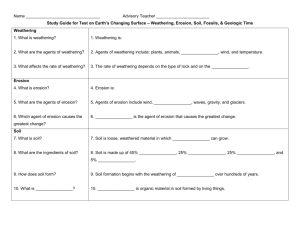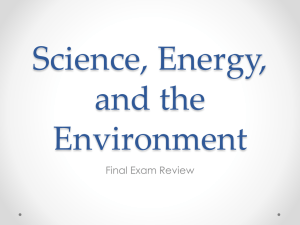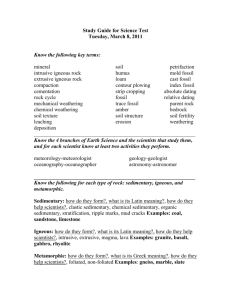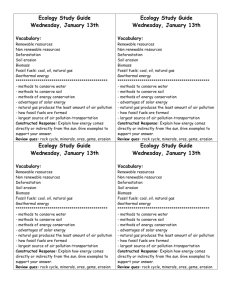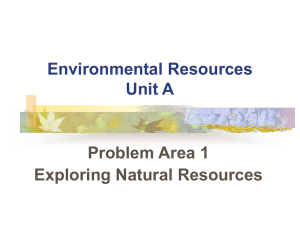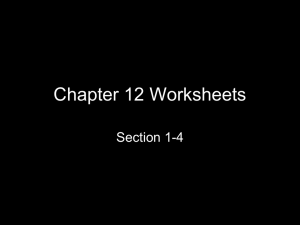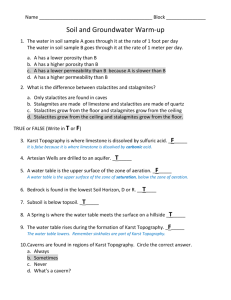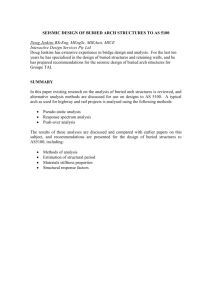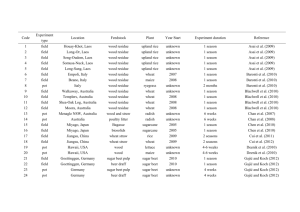earth review HW_Russell
advertisement
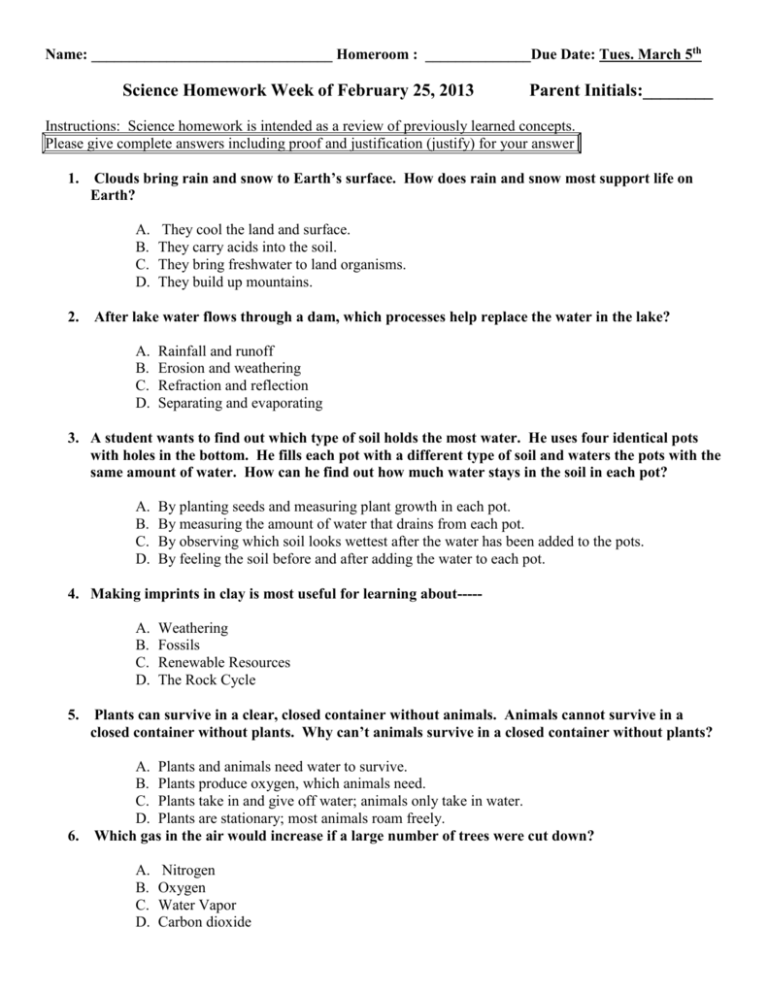
Name: ________________________________ Homeroom : ______________Due Date: Tues. March 5th Science Homework Week of February 25, 2013 Parent Initials:________ Instructions: Science homework is intended as a review of previously learned concepts. Please give complete answers including proof and justification (justify) for your answer 1. Clouds bring rain and snow to Earth’s surface. How does rain and snow most support life on Earth? A. B. C. D. 2. They cool the land and surface. They carry acids into the soil. They bring freshwater to land organisms. They build up mountains. After lake water flows through a dam, which processes help replace the water in the lake? A. B. C. D. Rainfall and runoff Erosion and weathering Refraction and reflection Separating and evaporating 3. A student wants to find out which type of soil holds the most water. He uses four identical pots with holes in the bottom. He fills each pot with a different type of soil and waters the pots with the same amount of water. How can he find out how much water stays in the soil in each pot? A. B. C. D. By planting seeds and measuring plant growth in each pot. By measuring the amount of water that drains from each pot. By observing which soil looks wettest after the water has been added to the pots. By feeling the soil before and after adding the water to each pot. 4. Making imprints in clay is most useful for learning about----A. B. C. D. 5. 6. Weathering Fossils Renewable Resources The Rock Cycle Plants can survive in a clear, closed container without animals. Animals cannot survive in a closed container without plants. Why can’t animals survive in a closed container without plants? A. Plants and animals need water to survive. B. Plants produce oxygen, which animals need. C. Plants take in and give off water; animals only take in water. D. Plants are stationary; most animals roam freely. Which gas in the air would increase if a large number of trees were cut down? A. B. C. D. Nitrogen Oxygen Water Vapor Carbon dioxide 7. Draw a diagram of how a delta forms. Please include: the river, the ocean, the mouth of the river. Label where the sediments are getting dropped off and building up the land. 8. A delta forming is an example of:_____________________________ because new land is building up. 9. Match the time of day with the length of the shadow by drawing lines between them. a. 6.2 meters 6:30 pm b. 2 meters 12:15 pm c. 50 centimeters 10:00 am 10. Please give a synonym word/phrase for the following science words: a. Weathering = _________________________ b. Erosion = ____________________________ c. Deposition = __________________________ d. Reflect = _____________________________ e. Refract = _____________________________ 11. A river will change its course over time. Think about how long it would take a river to change its course. Describe one way people could document this change. Explain how long you would have to document it for and why. 12. Fossil fuels formed over a long period of time because heat and pressure were applied to — A B C D carbon filtered through limestone organisms buried in the ground bacteria on top of the mud nitrogen mixed in the water 13. The finger-like formations in the cavern shown above are called stalactites and stalagmites. Which process most likely formed these stalactites and stalagmites? A B C D Slow deposition of minerals Fast erosion of soil Fast rising of water Slow cooling of air 14. Coal is a nonrenewable resource that was formed hundreds of millions of years ago in swampy areas. Coal was formed from — A B C D silica rich lava that has been compressed over time animal remains that were buried over an extended period plant material that was buried over an extended period sedimentary rocks that have been compressed over time 15. Which of the following led to the formation of oil as a natural resource? A B C D Oil from the seas sank into underground caves over thousands of years. Hundreds of years ago swamps formed black mud and were buried. Dinosaurs died and their bones became fossilized over time. Tiny sea creatures collected sunlight and changed it to chemical energy. 16. Oil, natural gas, and coal provide most of the energy we use today. How were these resources formed? A B C D These renewable resources formed deep in the Earth from prehistoric plants and animals. These nonrenewable resources formed deep in the Earth from prehistoric plants and animals. These nonrenewable resources formed from magma deep in the Earth. These inexhaustible resources formed from magma deep in the Earth. 17. Millions of years ago the remains of dead plants and animals were buried by sediments. Through the action of heat and pressure over millions of years, these remains changed form. We now call these changed remains— A B C D Solar energy Renewable Fossil fuels Heat energy 18. The process of breaking up rocks on the surface of the Earth is called— A B C D deposition sedimentation erosion weathering 19. Which of the following must occur in order for plant remains to be transformed into fossil fuels? The plant remains must be— A B C D eaten burned buried recycled 20. The energy stored in fossil fuels like oil and natural gas first came from the— A B C D rocks dinosaurs sun pipelines 21. Coal, oil, and gas are resources that come from— A B C D electric power plants volcanic eruptions the movement of water the remains of living organisms


